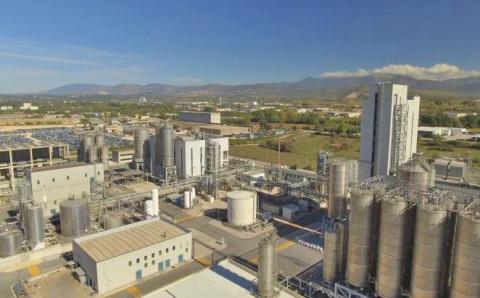Mater‐Biopolymer - industrial regeneration and recovery of production residues in biopolyesters industry
Mater-Biopolymer is a company based in Patrica (Italy), 100% owned by Novamont, dedicated to the production of Origo-Bi, biodegradable biopolyesters of renewable origin, and to the development of new biopolymers.
The industrial site is the result of the reconversion of existing infrastructures and skills of an abandoned production plant for PET. It is a highly efficient plant able to ensure the highest quality and safety requirements and is equipped with a complex system of utilities, which contribute to minimizing costs and waste through recovery and reuse.
The various sections of the plant have been regenerated, modified and in some cases wholly renovated to implement innovative technologies able to use the raw materials of Novamont's supply chain to manufacture biopolyesters through a process which is increasingly sustainable, and always directed towards reducing emissions.
Mater-Biopolymer is also equipped with recovery utilities among which a process for wastewater purification aimed at obtaining tetrahydrofuran (THF), a chemical intermediate for the chemical and pharmaceutical industries, for the first time in the world sourced from renewable sources (bio-THF).
With a production capacity of 100,000 metric tons of Origo-Bi per year, and occupying a total surface area of 140,000 m2, the Patrica site employs around 90 people, without considering the indirect employment generated by its operation.
With regard to environmental impacts, the reconversion of the second production line and Tetrahydrofuran (THF) recovery have generated environmental advantages by reducing CO2 emissions and reducing road transport. These can be quantified as follows:
- 246,000 metric tons of CO2 equivalent emissions per year have been avoided
- 1,296,000 km of road transport have been avoided, in relation to the transport of THF-containing wastes, which used to be disposed of off-site.

